
Cirkit Designer
Your all-in-one circuit design IDE
Home /
Component Documentation
How to Use 12v PWM Fan (120mm): Examples, Pinouts, and Specs
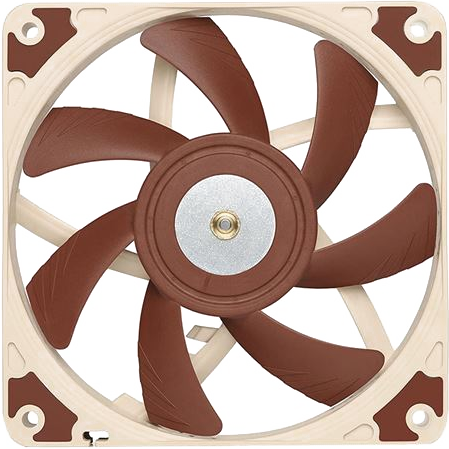
 Design with 12v PWM Fan (120mm) in Cirkit Designer
Design with 12v PWM Fan (120mm) in Cirkit DesignerIntroduction
The 12V PWM Fan (120mm) is a versatile cooling solution designed to operate on a 12-volt power supply. It utilizes Pulse Width Modulation (PWM) for precise speed control, making it ideal for a variety of applications. This fan is commonly used in electronic devices, computer systems, and other environments where efficient cooling is essential.
Explore Projects Built with 12v PWM Fan (120mm)
12V Battery-Powered Fan System
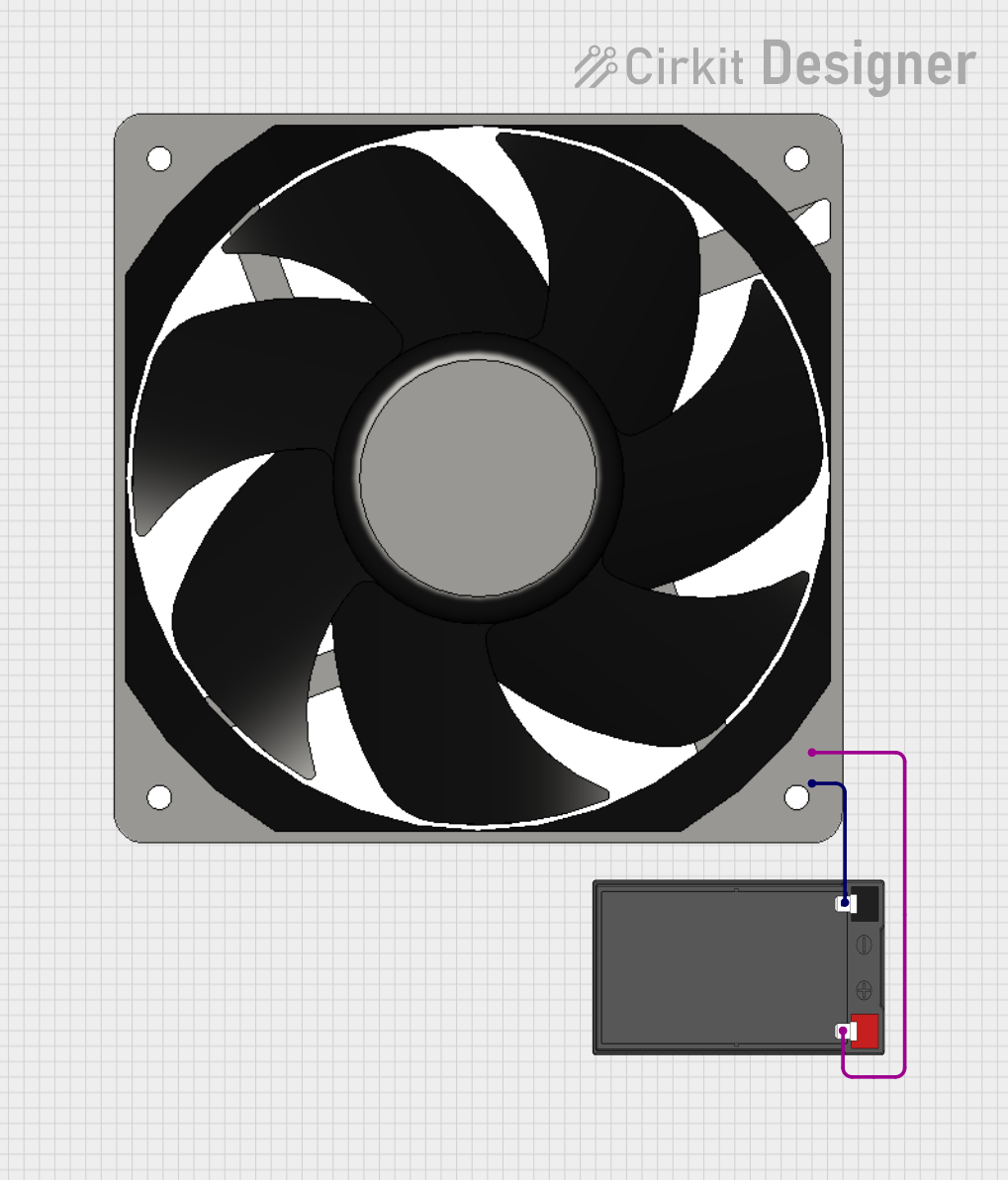
This circuit connects a 120mm 12V DC fan to a 12V 7Ah battery. The fan's positive and negative terminals are directly connected to the corresponding positive and negative terminals of the battery, allowing the fan to operate at its rated voltage.
 Open Project in Cirkit Designer
Open Project in Cirkit DesignerESP32-Based Wi-Fi Controlled PWM Fan with Temperature Regulation
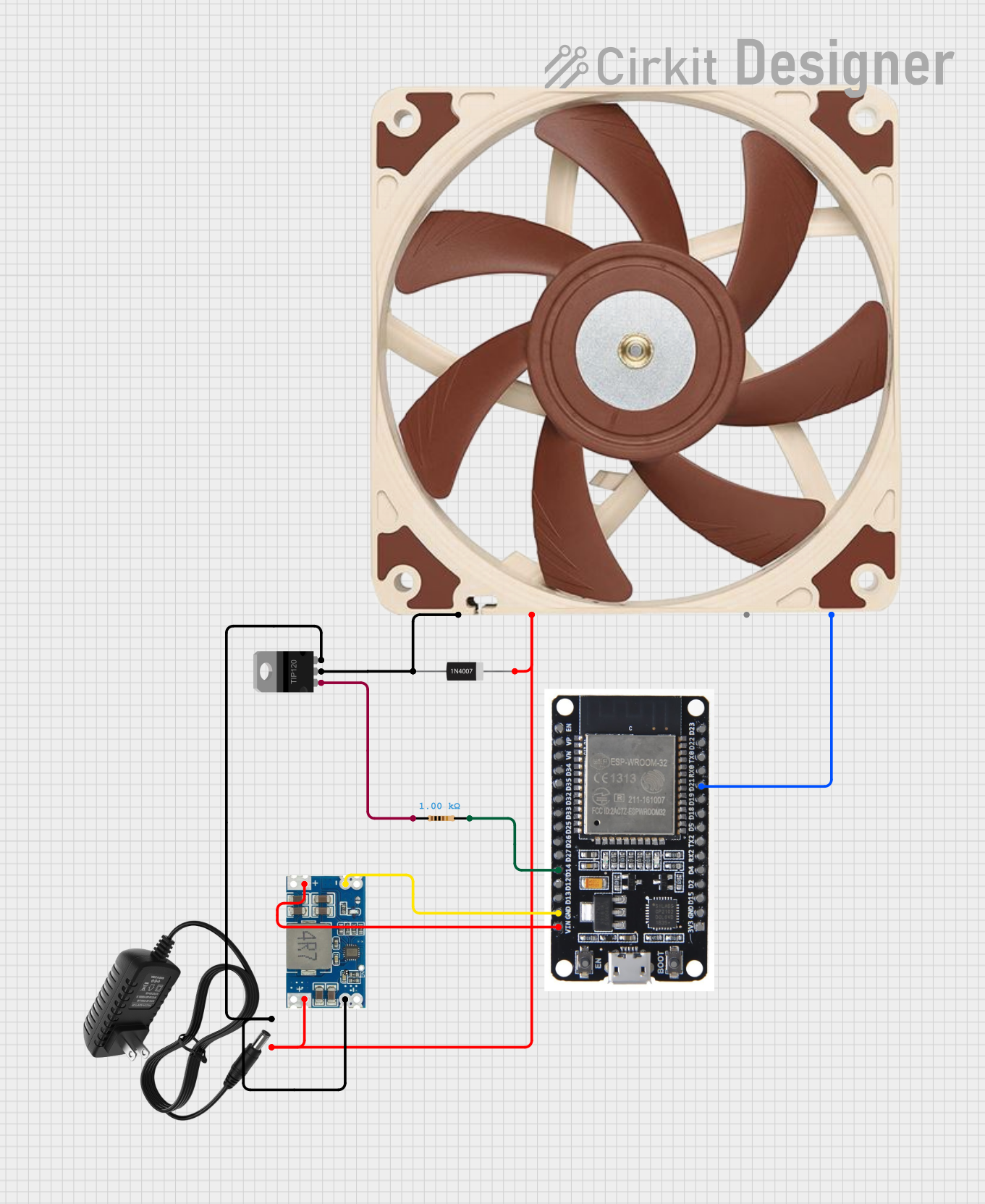
This circuit controls a 12V PWM fan using an ESP32 microcontroller. The ESP32 regulates the fan speed via a TIP120 transistor and a 1kΩ resistor, with power supplied by a 12V power source and stepped down to 5V for the ESP32 using a Mini 560 step-down converter.
 Open Project in Cirkit Designer
Open Project in Cirkit DesignerW1209 Thermostat-Controlled Peltier Cooler with 12V Fan
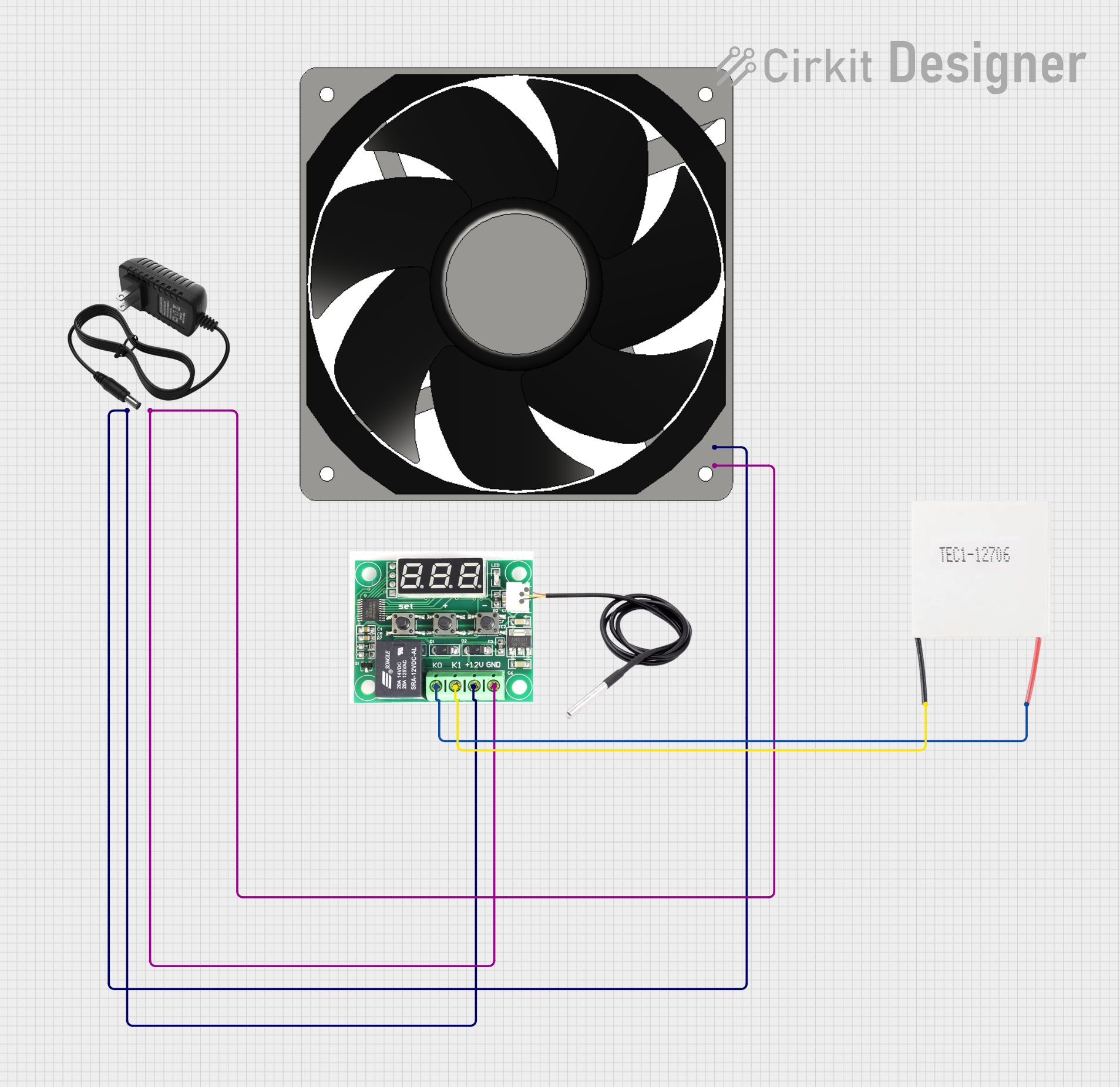
This circuit is a temperature control system that uses a W1209 thermostat module to regulate a Peltier module and a 12V fan. The 12V power supply provides power to the W1209 module and the fan, while the W1209 controls the Peltier module based on temperature readings.
 Open Project in Cirkit Designer
Open Project in Cirkit DesignerArduino Nano Controlled PWM Fan with Variable Speed and Rocker Switch
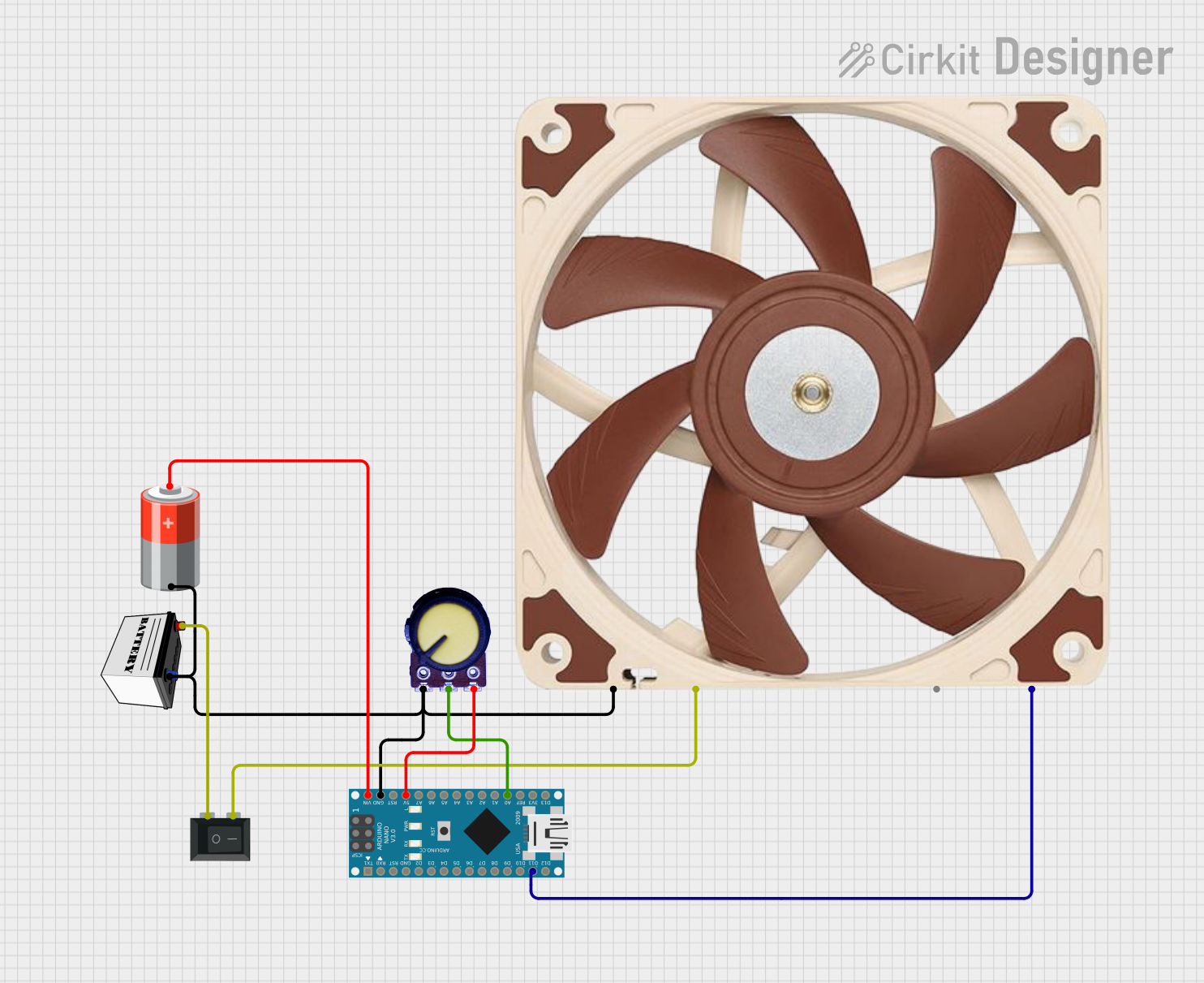
This circuit uses an Arduino Nano to control the speed of a 12V PWM fan with a potentiometer. The Arduino is powered by a 5V battery, while the fan is powered by a separate 12V battery with an SPST rocker switch for power control.
 Open Project in Cirkit Designer
Open Project in Cirkit DesignerExplore Projects Built with 12v PWM Fan (120mm)

12V Battery-Powered Fan System
This circuit connects a 120mm 12V DC fan to a 12V 7Ah battery. The fan's positive and negative terminals are directly connected to the corresponding positive and negative terminals of the battery, allowing the fan to operate at its rated voltage.
 Open Project in Cirkit Designer
Open Project in Cirkit Designer
ESP32-Based Wi-Fi Controlled PWM Fan with Temperature Regulation
This circuit controls a 12V PWM fan using an ESP32 microcontroller. The ESP32 regulates the fan speed via a TIP120 transistor and a 1kΩ resistor, with power supplied by a 12V power source and stepped down to 5V for the ESP32 using a Mini 560 step-down converter.
 Open Project in Cirkit Designer
Open Project in Cirkit Designer
W1209 Thermostat-Controlled Peltier Cooler with 12V Fan
This circuit is a temperature control system that uses a W1209 thermostat module to regulate a Peltier module and a 12V fan. The 12V power supply provides power to the W1209 module and the fan, while the W1209 controls the Peltier module based on temperature readings.
 Open Project in Cirkit Designer
Open Project in Cirkit Designer
Arduino Nano Controlled PWM Fan with Variable Speed and Rocker Switch
This circuit uses an Arduino Nano to control the speed of a 12V PWM fan with a potentiometer. The Arduino is powered by a 5V battery, while the fan is powered by a separate 12V battery with an SPST rocker switch for power control.
 Open Project in Cirkit Designer
Open Project in Cirkit DesignerTechnical Specifications
Key Technical Details
| Parameter | Value |
|---|---|
| Voltage | 12V DC |
| Current | 0.2A - 0.5A |
| Power Rating | 2.4W - 6W |
| Fan Speed | 600 - 2000 RPM |
| Airflow | 40 - 70 CFM |
| Noise Level | 20 - 35 dBA |
| PWM Frequency | 25kHz |
| Connector Type | 4-pin Molex |
| Dimensions | 120mm x 120mm x 25mm |
Pin Configuration and Descriptions
| Pin Number | Pin Name | Description |
|---|---|---|
| 1 | GND | Ground |
| 2 | +12V | Power Supply (12V DC) |
| 3 | Sense | Tachometer Output (provides RPM feedback) |
| 4 | PWM | PWM Control Signal (for speed control) |
Usage Instructions
How to Use the Component in a Circuit
To use the 12V PWM Fan in a circuit, follow these steps:
- Power Supply Connection: Connect the +12V pin to a 12V DC power supply and the GND pin to the ground.
- PWM Signal: Connect the PWM pin to a PWM-capable output pin on your microcontroller (e.g., Arduino UNO).
- Tachometer Feedback: Optionally, connect the Sense pin to an input pin on your microcontroller to monitor the fan speed.
Important Considerations and Best Practices
- PWM Signal: Ensure the PWM signal is within the specified frequency range (25kHz) for optimal performance.
- Power Supply: Use a stable 12V DC power supply to avoid fluctuations that could affect fan performance.
- Mounting: Securely mount the fan to prevent vibrations and noise.
- Airflow Direction: Ensure the fan is oriented correctly to direct airflow where needed.
Example Circuit with Arduino UNO
// Example code to control a 12V PWM Fan with Arduino UNO
const int pwmPin = 9; // PWM pin connected to the fan's PWM input
const int sensePin = 2; // Sense pin connected to the fan's tachometer output
void setup() {
pinMode(pwmPin, OUTPUT); // Set the PWM pin as an output
pinMode(sensePin, INPUT); // Set the Sense pin as an input
Serial.begin(9600); // Initialize serial communication for monitoring
}
void loop() {
int fanSpeed = 128; // Set fan speed (0-255)
analogWrite(pwmPin, fanSpeed); // Write PWM signal to control fan speed
// Read and print the fan's RPM (optional)
int rpm = readFanRPM();
Serial.print("Fan RPM: ");
Serial.println(rpm);
delay(1000); // Wait for 1 second
}
int readFanRPM() {
// Function to read the fan's RPM from the Sense pin
// This is a placeholder function and may need to be adjusted
// based on the specific fan and microcontroller used.
int rpm = pulseIn(sensePin, HIGH) * 60 / 2; // Calculate RPM
return rpm;
}
Troubleshooting and FAQs
Common Issues Users Might Face
Fan Not Spinning:
- Solution: Check the power supply connection and ensure it is providing 12V DC. Verify the ground connection.
Fan Speed Not Changing:
- Solution: Ensure the PWM signal is within the specified frequency range (25kHz). Check the PWM pin connection.
High Noise Levels:
- Solution: Ensure the fan is securely mounted to reduce vibrations. Check for any obstructions in the airflow path.
Incorrect RPM Readings:
- Solution: Verify the Sense pin connection. Adjust the RPM calculation method in the code if necessary.
Solutions and Tips for Troubleshooting
- Double-Check Connections: Ensure all connections are secure and correctly oriented.
- Use a Stable Power Supply: Fluctuations in the power supply can affect fan performance.
- Monitor PWM Signal: Use an oscilloscope to verify the PWM signal if the fan speed is not responding as expected.
- Consult the Datasheet: Refer to the fan's datasheet for specific details and troubleshooting tips.
By following this documentation, users can effectively integrate and utilize the 12V PWM Fan (120mm) in their projects, ensuring optimal cooling performance and reliability.